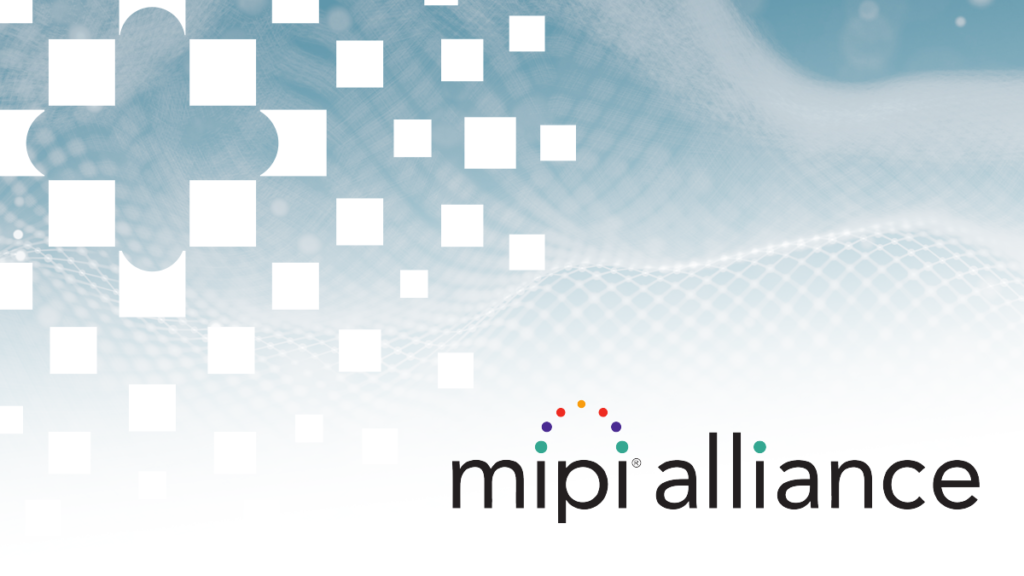Industry-leading specification simplifies the integration of image sensors and displays to support next-generation ADAS and ADS applications
BRIDGEWATER, N.J., Sept. 26, 2024 — The MIPI Alliance, an international organization that develops interface specifications for mobile and mobile-influenced industries, today announced the release of MIPI A-PHY v2.0, the next version of the automotive high-speed asymmetric serializer-deserializer (SerDes) physical-layer interface. Version 2.0 doubles the maximum available downlink data rate from 16 Gigabits per second (Gbps) to 32 Gbps on a single channel, as well as adds an additional uplink gear with an eight-fold speed boost to support up to 1.6 Gbps. These enhancements are designed to support the higher bandwidth requirements for zonal and other emerging architectures in next-generation vehicles.
MIPI A-PHY was purpose-built to provide high-performance links between automotive image sensors and displays and their associated electronic control units (ECUs). It was developed to simplify the integration of greater numbers of onboard sensors and displays for applications such as advanced driver-assistance systems (ADAS), modern digital cockpits, in-vehicle infotainment (IVI) and autonomous driving systems (ADS).
A-PHY offers a reach of up to 15 meters, unprecedented reliability with an ultra-low packet error rate of 10-19 over a vehicle’s lifetime, high noise immunity and ultra-low latency, along with very low bandwidth channel requirements. It also forms the foundation of MIPI’s Automotive SerDes Solutions (MASS), an end-to-end framework for connecting cameras, sensors and displays with built-in functional safety, security and data protection.
Key Features of A-PHY v2.0
MIPI A-PHY v2.0 features forward-looking enhancements in recognition of the increasing bandwidth and performance requirements needed for software-defined vehicles (SDVs), and zonal and other emerging vehicle architectures:
- PAM4 support now extends up to gear 5 (up to 16 Gbps).
- The addition of two new gears, G6 and G7, with PAM8 and PAM16 encoding, for speeds 24 and 32 Gbps, respectively.
- A faster 1.6 Gbps uplink gear, more than 8 times the data rate of the previous uplink gear, providing support for symmetrical 1 Gbps Ethernet channels over A-PHY links for command and control of automotive peripherals.
To aid implementation, no changes were made in the upper layers of A-PHY v2.0 so that migration from previous versions would have minimal impact. Version 2.0 is fully interoperable with A-PHY v1.1 and v1.0, and devices using all three specifications can coexist on the same network.
“MIPI A-PHY continues to evolve to provide unprecedented bandwidth and increased implementation flexibility while still maintaining its superior noise immunity and resiliency,” said Sanjiv Desai, chair of MIPI Alliance. “This new version allows A-PHY to meet an even greater range of speed and design needs, and provides a strong roadmap to address the future demands of the rapidly evolving automotive industry.”
Compliance Program Development Continues
To support testing and implementation, MIPI Alliance is developing a compliance program to provide OEMs and device manufacturers with assurance that their devices are compliant with the A-PHY specification. The program is being introduced in a phased approach, with the next test event scheduled for early December 2024.
To keep up with MIPI Alliance, subscribe to the MIPI blog and stay connected by following MIPI on Twitter, LinkedIn, and YouTube.
About MIPI Alliance
MIPI Alliance (MIPI) develops interface specifications for mobile and mobile-influenced industries. There is at least one MIPI specification in every smartphone manufactured today. Founded in 2003, the organization has over 375 member companies worldwide and more than 15 active working groups delivering specifications within the extended mobile ecosystem. Members of the organization include handset manufacturers, device OEMs, software providers, semiconductor companies, application processor developers, IP tool providers, automotive OEMs and Tier 1 suppliers, and test and test equipment companies, as well as camera, display, tablet and laptop manufacturers. For more information, please visit www.mipi.org.


